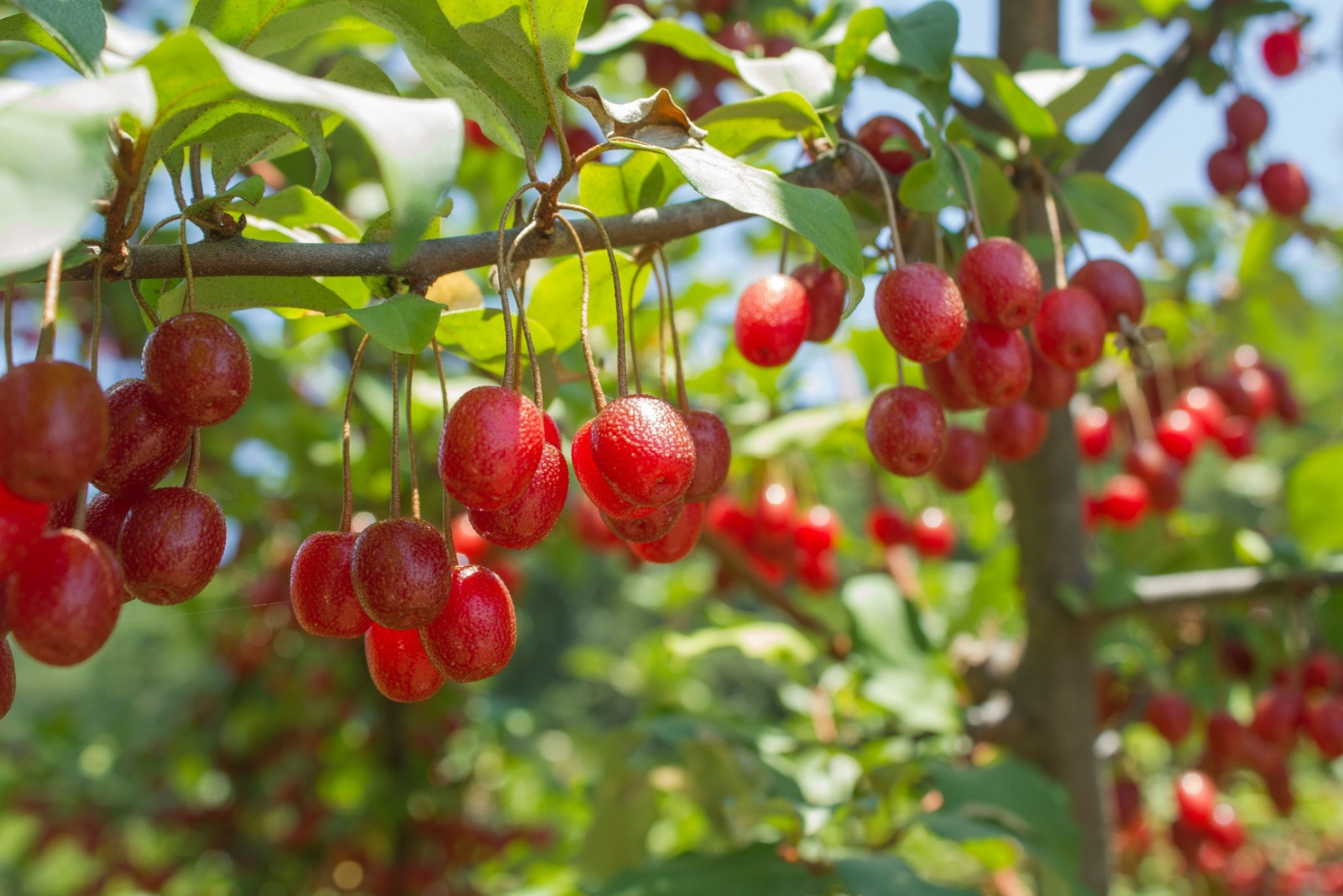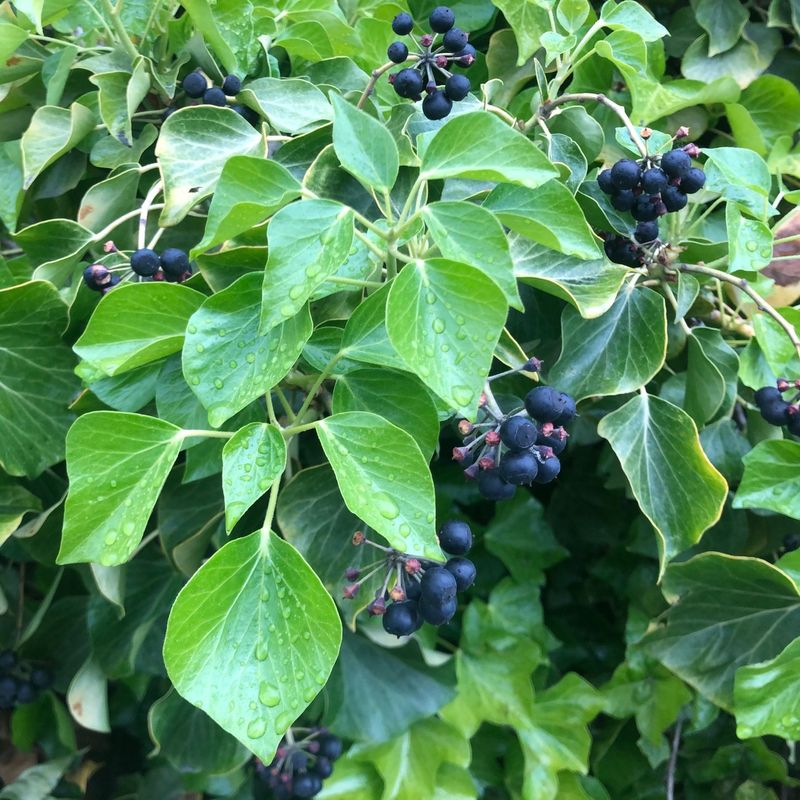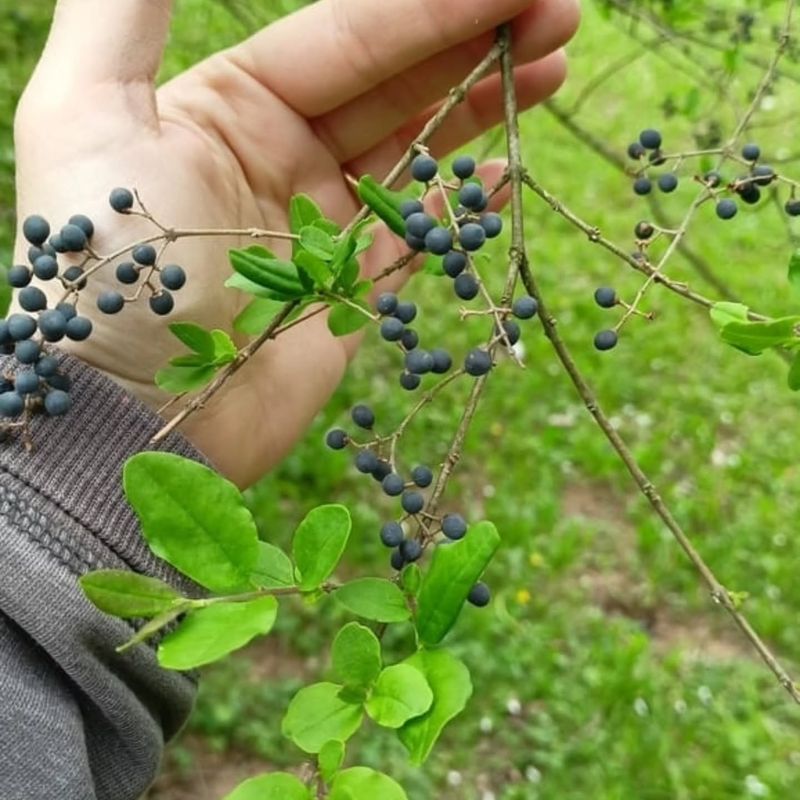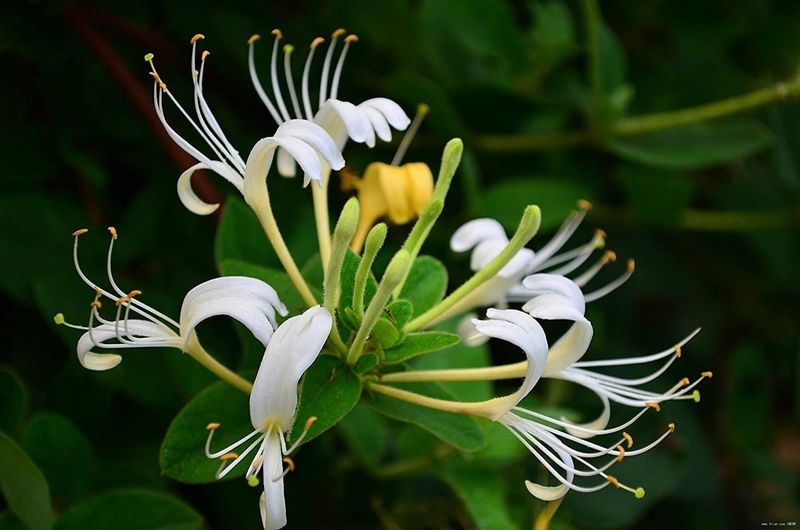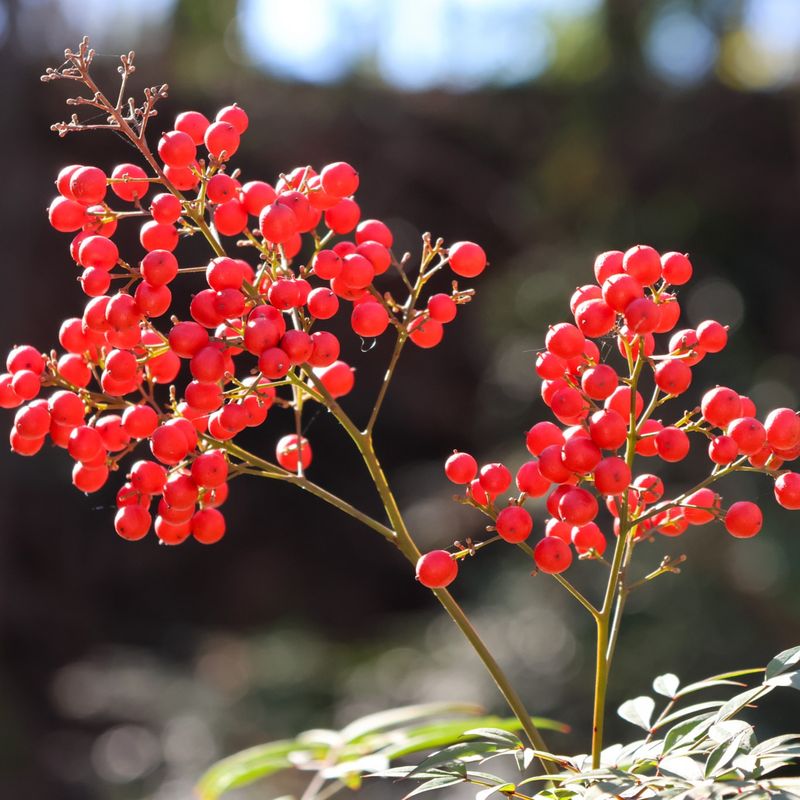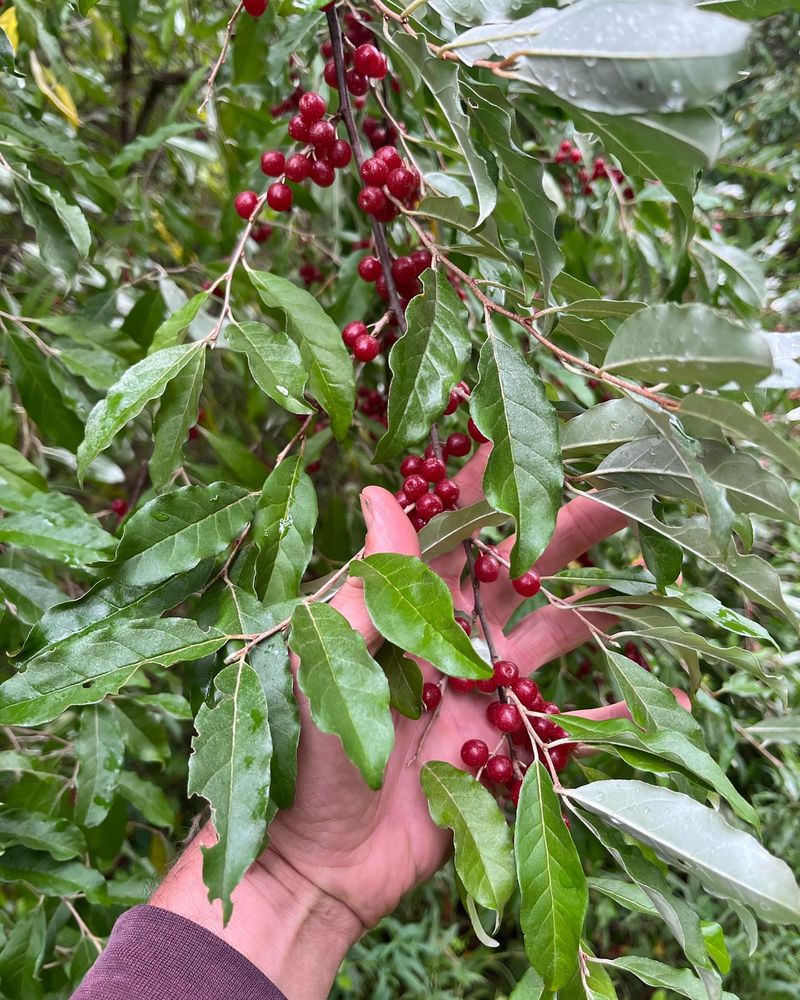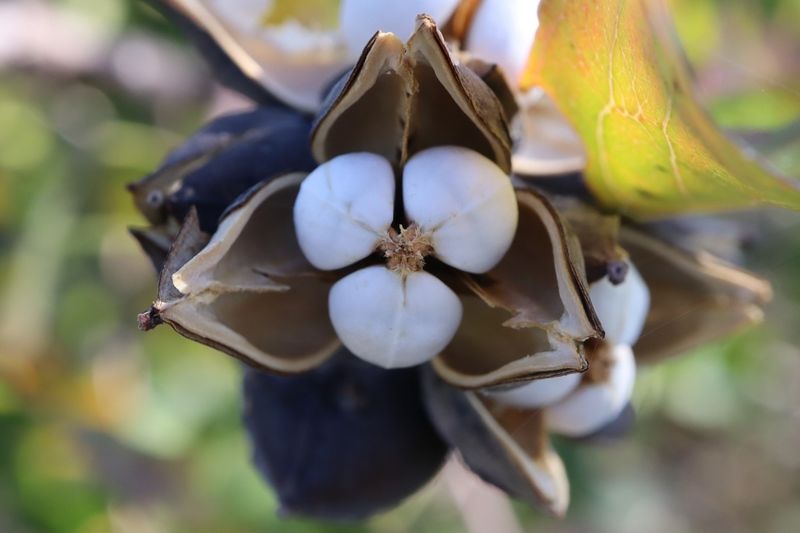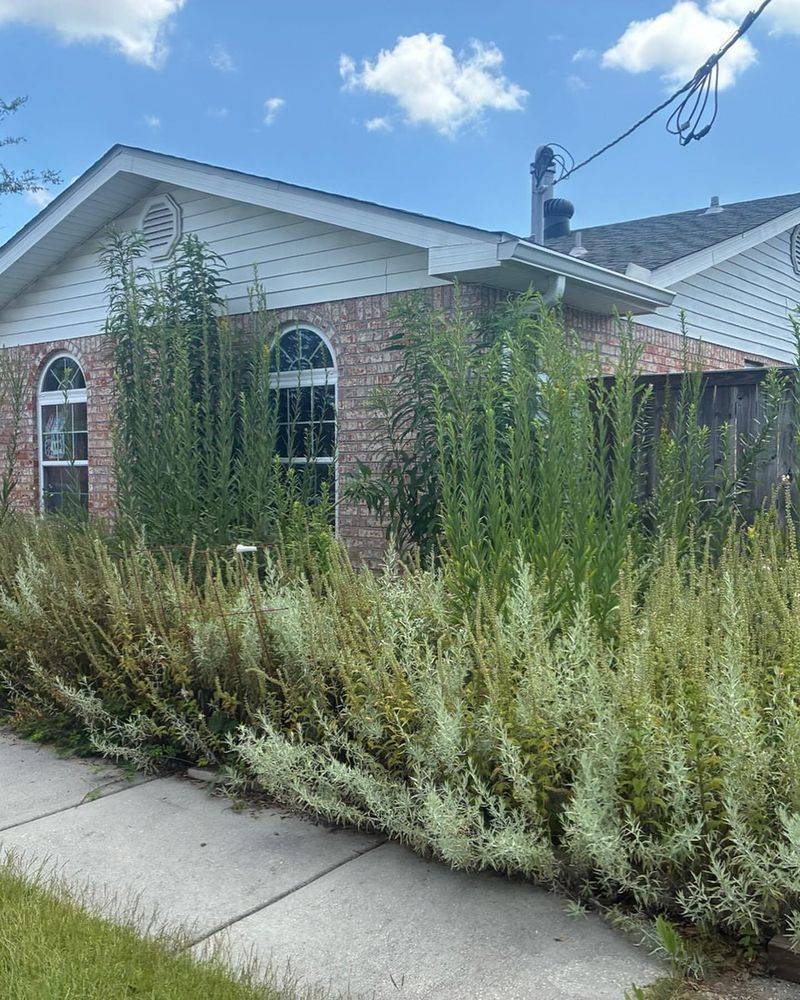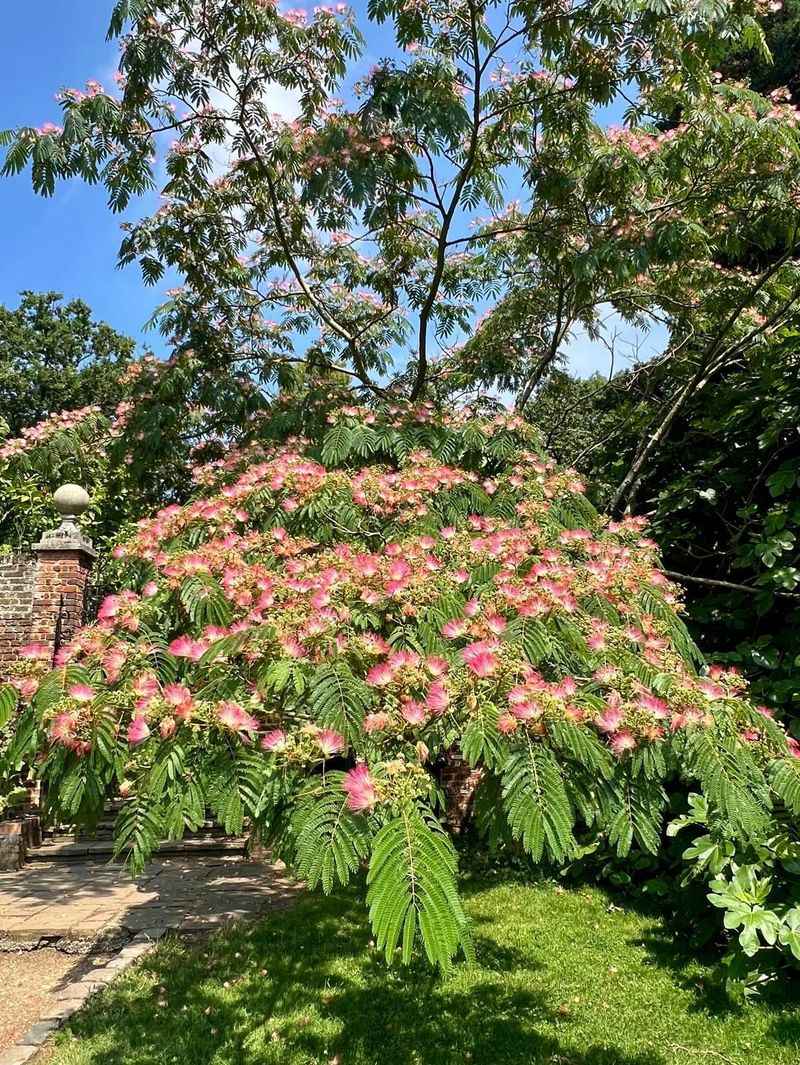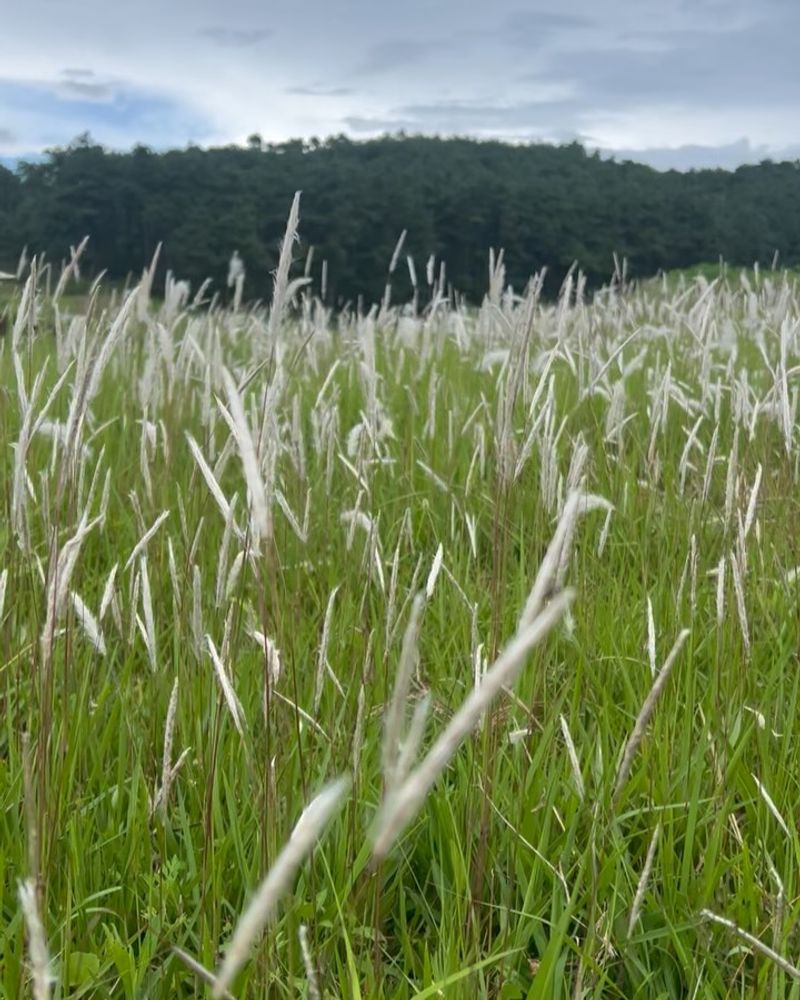Many beautiful plants sold at nurseries can become serious problems when they escape into natural areas. These invasive ornamentals crowd out native species, disrupt ecosystems, and can be extremely difficult to control once established.
Before adding new plants to your garden in the Southeast, take a moment to learn about these troublemakers that might be better left off your shopping list.
1. English Ivy (Hedera helix)
Once planted as an elegant groundcover, English ivy now strangles trees and blankets forest floors across the Southeast. Its aggressive vines climb up to 90 feet, blocking sunlight from tree leaves while adding weight that can topple trees during storms.
The dense ground cover smothers native wildflowers and prevents tree seedlings from growing. Birds spread the berries far beyond garden boundaries, helping this invader colonize natural areas. Removing established ivy requires persistent effort over several years.
2. Chinese Privet (Ligustrum sinense)
Walking through southern woodlands, you’ll likely encounter this leafy shrub that forms impenetrable thickets along streams and forest edges. Originally planted for hedges and privacy screens, Chinese privet escaped cultivation decades ago.
The small white flowers produce abundant berries that birds distribute widely. Research shows privet-dominated areas have 41% fewer native plant species and significantly reduced insect populations. Controlling privet often requires cutting stems and immediately applying herbicide to prevent resprouting.
3. Japanese Honeysuckle (Lonicera japonica)
Remember picking and sucking nectar from those fragrant yellow flowers as a kid? Unfortunately, Japanese honeysuckle’s sweet scent masks its destructive nature. This aggressive vine forms dense mats that smother shrubs and climb trees, eventually killing them by blocking light.
The semi-evergreen leaves give it an advantage over native plants during winter months. Birds eagerly eat the black berries, spreading seeds across the landscape. A single plant can grow 30 feet in one season, making this seemingly charming vine a serious threat to southeastern forests.
4. Bradford Pear (Pyrus calleryana)
Those clouds of white spring flowers come with a heavy price. Bradford pears were once promoted as perfect street trees – sterile and problem-free. That claim proved devastatingly false when different cultivars cross-pollinated, producing viable fruits.
Birds spread these seeds, creating thorny thickets that crowd out native vegetation. Beyond their invasive nature, Bradford pears have weak branch structure, making them prone to splitting in storms. Their flowers also emit an unpleasant fishy odor that many homeowners come to regret.
5. Nandina (Nandina domestica)
Often called heavenly bamboo, this evergreen shrub with bright red berries seems like a perfect landscape plant. Gardeners love its year-round interest and low maintenance needs. Yet those attractive berries contain cyanide compounds toxic to birds, particularly cedar waxwings who eat them in quantity.
Nandina spreads both by underground runners and seeds dispersed by wildlife. The shrubs form dense colonies in natural areas, displacing native understory plants. If you already have nandina, consider removing the berries before birds can eat them.
6. Chinese Wisteria (Wisteria sinensis)
Those cascading purple flowers may look romantic, but Chinese wisteria shows its true colors as it strangles trees and collapses forest canopies. The woody vines grow incredibly fast – up to 10 feet in a single year – and can reach 70 feet in length.
Wisteria vines become as thick as small trees, twisting around trunks and branches until they deform or kill host trees. The weight of mature vines can bring down entire trees during storms. Underground, the extensive root system sends up new shoots far from the original plant.
7. Golden Bamboo (Phyllostachys aurea)
Bamboo creates a lush, tropical feel in gardens, but running bamboos like this golden variety quickly become a homeowner’s nightmare. Underground rhizomes can spread 15 feet yearly, sending up new shoots through lawns, driveways, and even house foundations.
Once established, bamboo forms dense stands that exclude native vegetation and are nearly impossible to eradicate without heavy equipment or chemicals. Removing bamboo often requires years of cutting every new shoot to exhaust the plant’s energy reserves. Consider clumping bamboo varieties instead.
8. Autumn Olive (Elaeagnus umbellata)
Originally planted for wildlife habitat and erosion control, autumn olive quickly escaped cultivation. The silvery-leafed shrub produces enormous quantities of red berries – up to 200,000 per plant! – that birds eagerly spread across the landscape.
Adding insult to injury, autumn olive fixes nitrogen in the soil, changing conditions to favor itself and other invasives over native plants. The shrubs form dense thickets that shade out native vegetation. Even cutting to the ground stimulates vigorous resprouting unless herbicide is applied immediately.
9. Chinese Tallow Tree (Triadica sebifera)
Known as popcorn tree for its white seed coverings, this fast-growing invader transforms diverse ecosystems into near-monocultures. A single tree produces up to 100,000 seeds annually that remain viable for years in soil. Birds and water readily disperse the seeds.
Chinese tallow leafs out earlier than native species, giving it a competitive advantage. The tree also changes soil chemistry, making habitat less suitable for native plants. In coastal prairies and wetlands, these trees have completely altered historic ecosystems across the Southeast.
10. Japanese Climbing Fern (Lygodium japonicum)
Unlike most ferns that mind their own business, this climbing species creates a living fire ladder in southeastern forests. The delicate-looking fronds can grow 90 feet long, climbing over shrubs and trees to form dense mats that smother vegetation beneath.
Tiny spores spread easily by wind, water, and even on clothing or equipment. The fern thrives in both sunny and shaded areas, making few places safe from invasion. In fire-prone ecosystems, the climbing fronds carry flames into tree canopies, turning ground fires into devastating crown fires.
11. Mimosa Tree (Albizia julibrissin)
With feathery foliage and fluffy pink flowers that attract butterflies and hummingbirds, mimosa trees seem like a garden dream. Unfortunately, these fast-growing trees produce abundant seed pods that remain viable for decades in the soil, creating long-term management challenges.
Mimosas particularly threaten stream banks and disturbed areas, where they form thickets that displace native vegetation. The trees resprout vigorously when cut, often requiring herbicide treatment for effective control. Despite their beauty, these trees earn a place on invasive plant lists throughout the Southeast.
12. Cogongrass (Imperata cylindrica)
Sometimes sold as ornamental ‘Red Baron’ or ‘Japanese Blood Grass,’ cogongrass ranks among the world’s worst weeds. This aggressive grass forms dense stands that exclude virtually all other vegetation, even altering fire regimes to favor its own spread.
Sharp-edged leaves contain silica crystals that deter grazing animals. Underground, the extensive rhizome network makes control extremely difficult. A single plant can produce up to 3,000 seeds that travel on wind currents. Once established, cogongrass requires intensive, repeated treatments over many years to eliminate.
13. Mahonia/Oregon Grape (Mahonia bealei)
Leathery, spiny leaves and bright yellow winter flowers make this evergreen shrub popular in southern landscapes. Beneath its ornamental appearance lies an emerging threat to southeastern forests. Birds readily eat the blue-black berries, dispersing seeds into natural areas.
Once established, mahonia’s shade tolerance allows it to thrive in forest understories, displacing native shrubs and wildflowers. The prickly leaves also make dense stands nearly impenetrable for wildlife. As awareness grows about its invasive potential, more southeastern states are adding mahonia to their watch lists.

